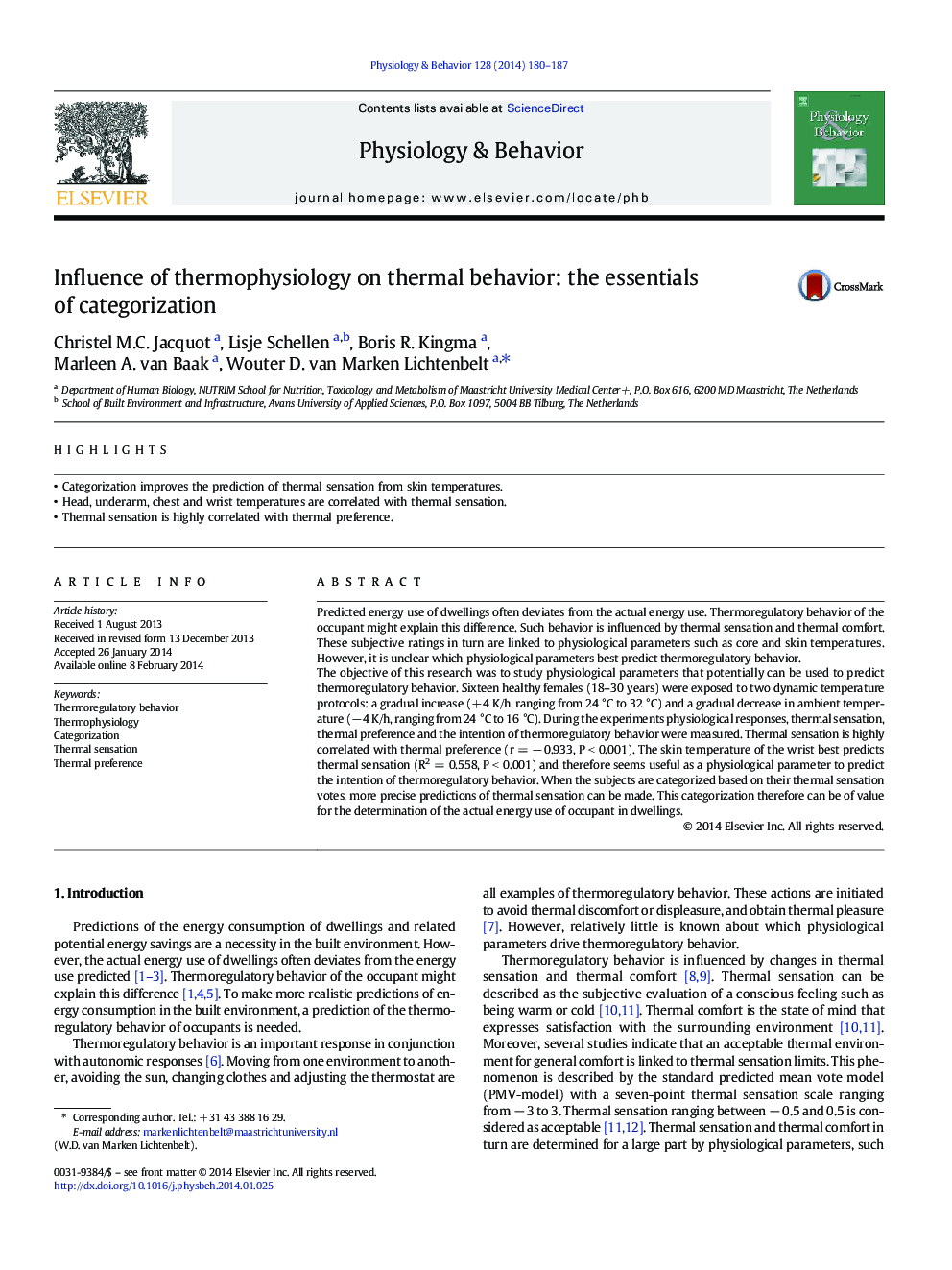| Article ID | Journal | Published Year | Pages | File Type |
|---|---|---|---|---|
| 5924463 | Physiology & Behavior | 2014 | 8 Pages |
â¢Categorization improves the prediction of thermal sensation from skin temperatures.â¢Head, underarm, chest and wrist temperatures are correlated with thermal sensation.â¢Thermal sensation is highly correlated with thermal preference.
Predicted energy use of dwellings often deviates from the actual energy use. Thermoregulatory behavior of the occupant might explain this difference. Such behavior is influenced by thermal sensation and thermal comfort. These subjective ratings in turn are linked to physiological parameters such as core and skin temperatures. However, it is unclear which physiological parameters best predict thermoregulatory behavior.The objective of this research was to study physiological parameters that potentially can be used to predict thermoregulatory behavior. Sixteen healthy females (18-30 years) were exposed to two dynamic temperature protocols: a gradual increase (+ 4 K/h, ranging from 24 °C to 32 °C) and a gradual decrease in ambient temperature (â 4 K/h, ranging from 24 °C to 16 °C). During the experiments physiological responses, thermal sensation, thermal preference and the intention of thermoregulatory behavior were measured. Thermal sensation is highly correlated with thermal preference (r = â 0.933, P < 0.001). The skin temperature of the wrist best predicts thermal sensation (R2 = 0.558, P < 0.001) and therefore seems useful as a physiological parameter to predict the intention of thermoregulatory behavior. When the subjects are categorized based on their thermal sensation votes, more precise predictions of thermal sensation can be made. This categorization therefore can be of value for the determination of the actual energy use of occupant in dwellings.
